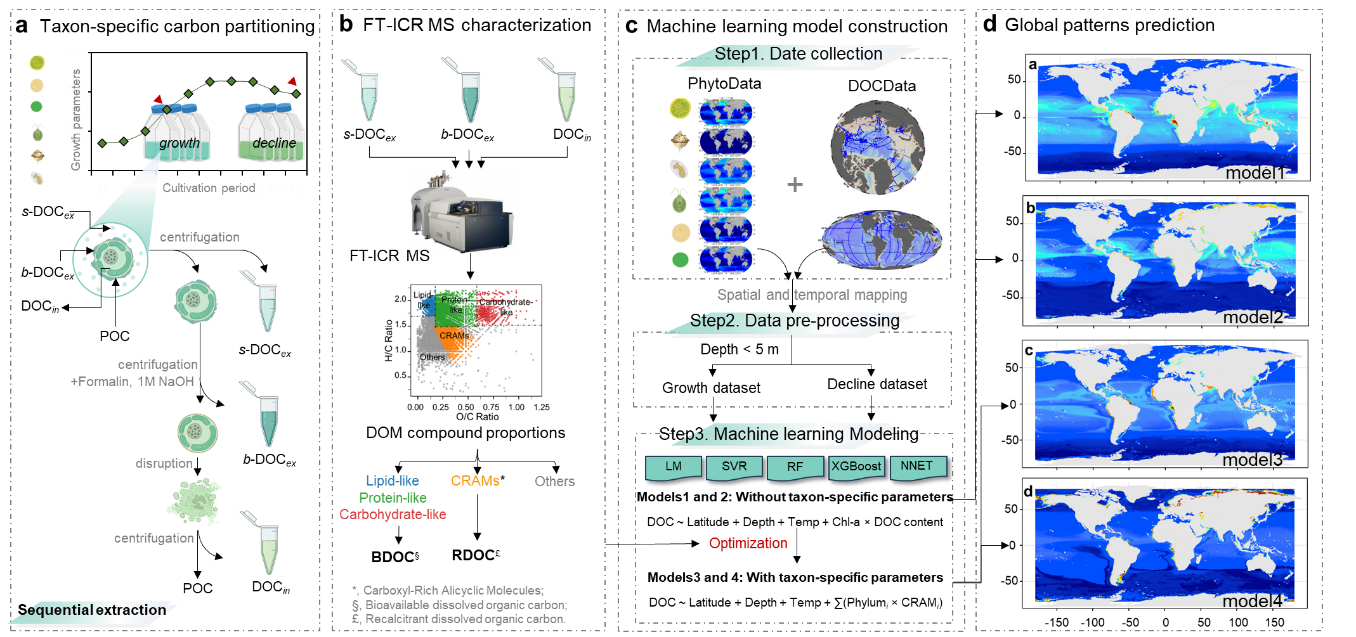Phytoplankton-microscopic algae that form the base of ocean food webs-have long been viewed as transient players in the global carbon cycle: They bloom, die, and the carbon they contain is quickly recycled back into the ecosystem. However, a research team led by Prof. WANG Faming at the South China Botanical Garden (SCBG) of the Chinese Academy of Sciences has discovered that these tiny organisms can directly pump "stubborn" carbon into the ocean, where it may persist for centuries.
The breakthrough, published in Nature Communications on August 20, challenges decades of conventional scientific wisdom that most algal carbon is short-lived. Using ultrahigh-resolution mass spectrometry, the team analyzed six major phytoplankton groups and found that more than 10% of their carbon output takes the form of "recalcitrant dissolved organic carbon" (RDOC), a pool of organic molecules that acts as a long-term carbon reservoir in the ocean.
Phytoplankton-produced dissolved organic carbon (DOC) follows two distinct pathways, the study explained. A portion is released as bioavailable DOC (BDOC), which is rapidly consumed by microorganisms, with some later transformed into RDOC. Critically, the research also confirmed that phytoplankton can secrete RDOC directly.
Regardless of whether it comes from microbial transformation or direct release, RDOC plays a pivotal role in the long-term buildup of the marine DOC pool, meaning the molecular makeup of phytoplankton carbon helps regulate the size and stability of the global DOC reservoir.
Additionally, the high species diversity of phytoplankton and their short growth-decline cycles lead to significant variability in how carbon is used across different taxa and growing seasons. This variability has historically hindered efforts to map the composition of algal-derived DOC and its role in carbon cycling.
To address this gap, the team combined ultrahigh-resolution mass spectrometry-a technique used to analyze the detailed molecular composition of DOC produced by phytoplankton-with satellite remote sensing and machine learning models to create a global-scale dataset of marine DOC. This dataset not only quantified how different phytoplankton groups contribute to global marine DOC dynamics but also identified clear differences in algal-derived DOC across growth phases. For example, the analysis revealed that phytoplankton blooms in their growth phase produce significantly more RDOC than in their decline phase.
Dr. LU Zhe of SCBG, the study's first author, highlighted the practical implications of the research: "With this global dataset and our optimized oceanic DOC assessment models, we can now clearly and quickly predict how extended phytoplankton bloom durations or climate-driven shifts in phytoplankton community composition will impact the future dynamics of the ocean's DOC reservoir."

Schematic diagram of the technical route for this study.(Imaged by LU Zhe et al)






